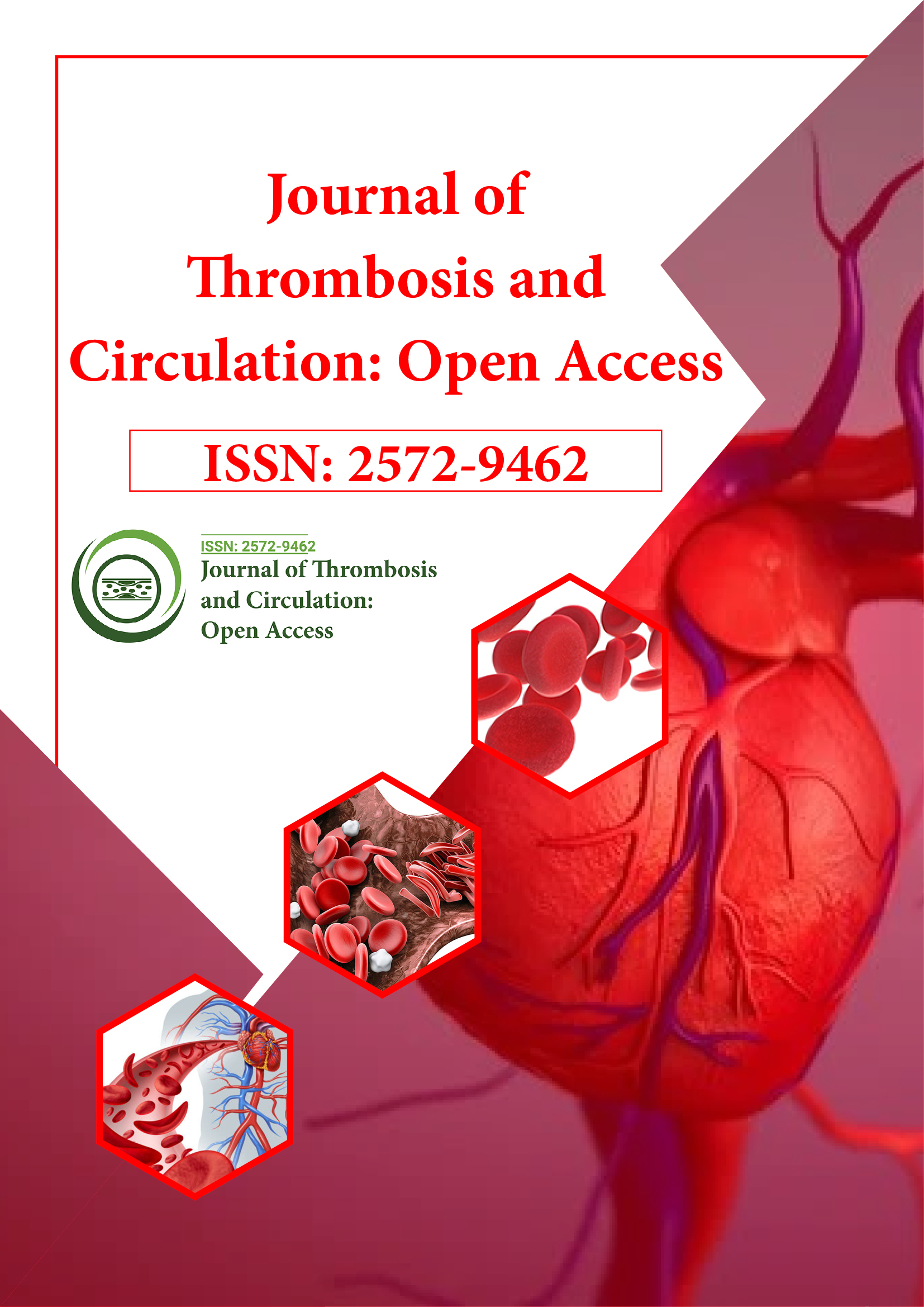Indexed In
- RefSeek
- Hamdard University
- EBSCO A-Z
- Publons
- Google Scholar
Useful Links
Share This Page
Journal Flyer

Open Access Journals
- Agri and Aquaculture
- Biochemistry
- Bioinformatics & Systems Biology
- Business & Management
- Chemistry
- Clinical Sciences
- Engineering
- Food & Nutrition
- General Science
- Genetics & Molecular Biology
- Immunology & Microbiology
- Medical Sciences
- Neuroscience & Psychology
- Nursing & Health Care
- Pharmaceutical Sciences
Review Article - (2021) Volume 7, Issue 4
Crisis Reversal of Anticoagulation
Ella Adley*Received: 06-Jul-2021 Published: 27-Jul-2021, DOI: 10.35248/2572-9462.21.7.164
Introduction
Unseemly draining is the most disturbing confusion of anticoagulant treatment. The danger of draining fluctuates with the sort of anticoagulant specialist used.1 the rate of draining while on warfarin has been assessed at 15–20% each year, with perilous draining happening at a pace of 1–3% each year. In 2010, atrial fibrillation alone incited around 30 million solutions for warfarin. This does exclude the numerous extra illness measures for which warfarin was shown. Likewise, the utilization of the immediate oral anticoagulants (DOACs, for example, factor Xa and factor IIa (thrombin) inhibitors, is quickly expanding [1]. Contrasted with warfarin, these medications have commonly been related with lower paces of significant drain and a decrease in the danger of lethal draining and intracranial discharge (ICH). Inferable from the penchant of anti-coagulated patients to drain, a system for inversion of anticoagulation incited by any of the normal specialists is fundamental for the treating clinician [2].
Hemostasis happens as a component of a firmly controlled harmony between cluster development and clump breakdown. Cluster arrangement creates through an association of two autonomous cycles—essential and optional hemostasis. At the point when harmed vascular endothelium is uncovered, platelets tie with a glycoprotein restricting complex (GPIIbIIIa) on the platelet and von Willebrand factor (vWF) on the endothelium [3]. Platelets are then enacted and delivery serotonin, platelet initiating factor, platelet factor 4, thromboxane A2, and different substances, which draw in, actuate, and work with accumulation of different platelets. Essential hemostasis relies upon platelet tally and platelet work. Prescriptions like headache medicine, nonsteroidal calming medications, and others can restrain platelet collection for differing terms. Platelet work testing uncovers issues with platelet movement however isn't done progressively in order to be helpful in the crisis division (ED) setting. Optional Hemostasis includes the age of fibrin because of initiation of the coagulating course. Two pathways exist to start the course: the tissue factor (TF) pathway (once called the outward pathway) and the contact initiation pathway (once in the past the natural pathway). The TF pathway is actuated when a physical issue to the vein permits factor VII (FVII) to interact with TF, which is communicated on stromal fibroblasts and leukocytes. The FVII-TF complex initiates the normal pathway prompting a huge thrombin burst. This pathway is all the more clinically significant as it creates the most fibrin in the briefest time.
Warfarin represses hepatic blend of nutrient K-subordinate coagulation factors II, VII, IX, and X.12 This happens through restraint of nutrient K epoxide reductase and nutrient K1 reductase, which exhaust nutrient HK2 (hydroquinone) and limit gamma-carboxylation of administrative anticoagulant proteins C and S, just as nutrient K-subordinate coagulation. Nutrient K1 (phylloquinone) considers the union of nutrient K-subordinate thickening variables all over again, while new frozen plasma (FFP) and prothrombin complex concentrates (PCCs) give supplemental coagulation factors, remembering proteins C and S for certain arrangements. Nutrient K might be managed orally or intravenously. Because of sporadic ingestion, nutrient K ought to never be given through subcutaneous or intramuscular courses [4].
Anti-inflamatory medicine irreversibly restrains cyclooxygenase (COX)- 1 and COX-2 catalysts to cause downstream restraint of thromboxane A2, while thienopyridines, for example, clopidogrel (Plavix), ticlopidine (Ticlid), and prasugrel (Effient) irreversibly repress the P2Y12 receptor for adenosine diphosphate (ADP) on platelets, forestalling ADP restricting and platelet total.
Conclusion
Hemostasis is a complex, firmly directed harmony among draining and coagulating. Using anticoagulant specialists, patients can be made to drain, and with inversion specialists (some of which are procoagulants essentially), patients can be compelled to cluster. In every one of these circumstances, the damages and advantages ought to be said something the wellbeing of the patient and circumstance. Ideally soon, more secure anticoagulants and more-explicit inversion specialists will open up, alongside simple admittance to explicit testing that can direct our utilization of these incredible prescriptions.
REFERENCES
- Shoeb M, Fang MC. Assessing bleeding risk in patients taking anticoagulants. Journal of thrombosis and thrombolysis. 2013; 35(3):312-9.
- Zareh M, Davis A, Henderson S. Reversal of warfarin-induced hemorrhage in the emergency department. Western Journal of Emergency Medicine. 2011:12(4):386.
- Sangkuhl K, Shuldiner AR, Klein TE, Altman RB. Platelet aggregation pathway. Pharmacogenetics and genomics. 2011; 21(8):516.
- Nowak G. The ecarin clotting time, a universal method to quantify direct thrombin inhibitors. Pathophysiology of haemostasis and thrombosis. 2003; 33(4):173-83.
Citation: Adley E (2021) Crisis Reversal of Anticoagulation J Thrombo Cir. 7:164. 10.35248/2572-9462.7.164.
Copyright: �©2021 Adley E. This is an open-access article distributed under the terms of the Creative Commons Attribution License, which permits unrestricted use, distribution, and reproduction in any medium, provided the original author and source are credited.
